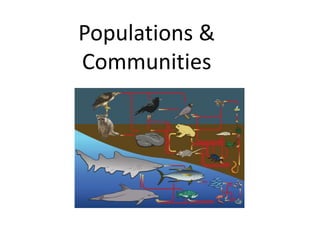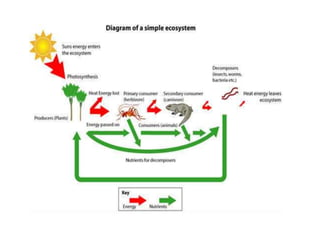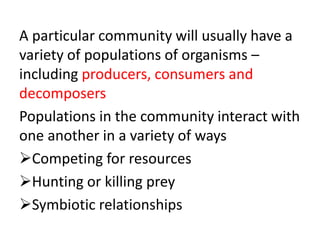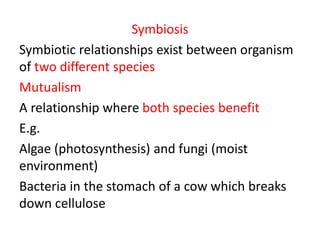A population is a group of one species that interbreed in a habitat. The community includes all organisms in an area, including multiple populations. The ecosystem includes the community and its physical environment. A community contains producers, consumers, and decomposers that interact through competition, predation, and symbiosis. Reproductive isolation maintains species boundaries through barriers preventing interbreeding.



























